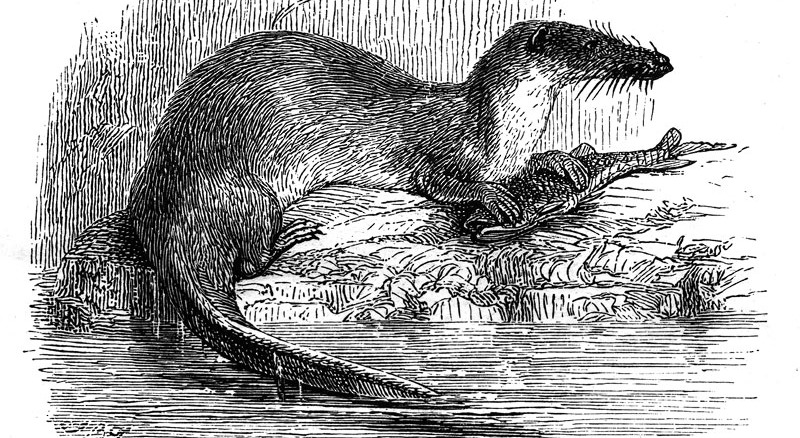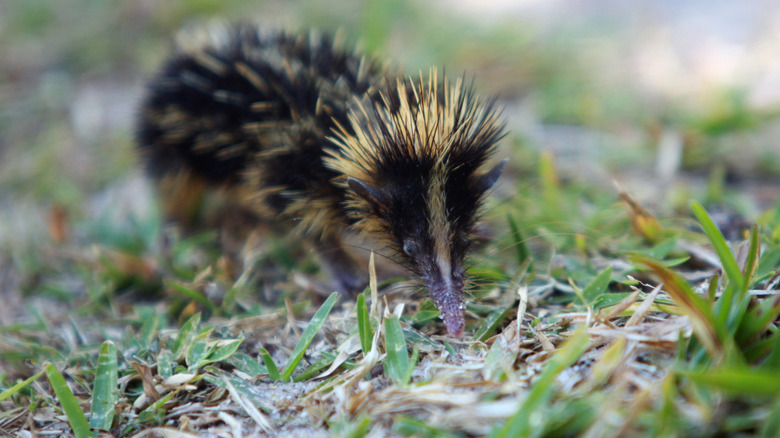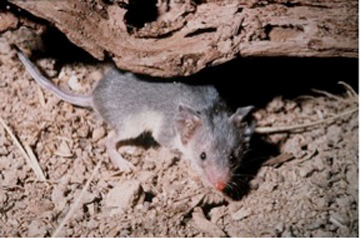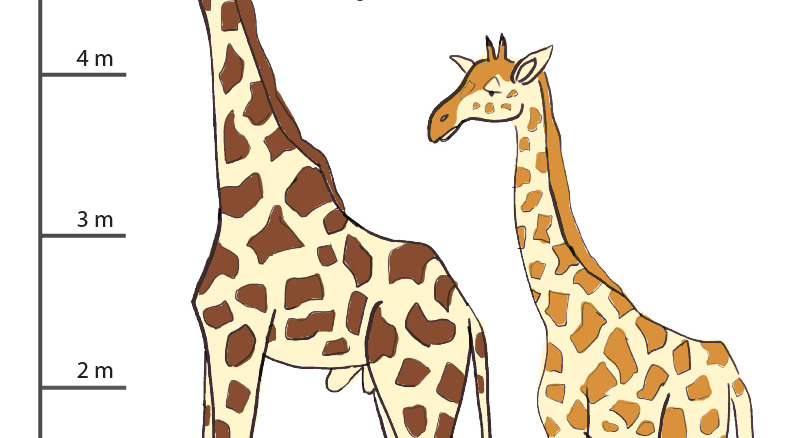By David Brown & Stuart Short*
“Does anybody know what this animal is?” asks Stuart Short as he carefully holds a small mammal up for his audience to see.
Stuart is a biologist and wildlife educator. He is giving a presentation on the animal to an audience at a natural history museum. The animal is small and has spikes all over its roundish body. It has a long snout and small black eyes on a furry face.
“It’s a hedgehog!” a girl in the audience replies. That is a good guess, but not the right answer. The girl shouldn’t feel bad though. Of all the thousands of people that Stuart has talked to about this animal, only four have correctly guessed what it is.
What is this mystery mammal that has tricked so many people about its identity?
It is a lesser hedgehog tenrec.

The lesser hedgehog tenrec does indeed look like a hedgehog, so much so that people used to think that the tenrec was a close cousin of the hedgehog. Scientists now think that the lesser hedgehog tenrec is really the cousin of elephants, aardvarks, and manatees and is not closely related to hedgehogs at all.
Stuart tells the audience that the lesser hedgehog tenrec comes from Madagascar, an island off the coast of East Africa. There were never any hedgehogs on Madagascar so there was space there for an animal that ate the same diet of insects and other invertebrates that the hedgehog does. The lesser hedgehog tenrec is that animal. It protects itself from predators the same way that a real hedgehog does by rolling up into a ball with its spikes sticking outward. With a similar appearance and lifestyle to hedgehogs, it is no wonder that people are confused about what a tenrec really is.
A boy in the audience asks how the lesser hedgehog tenrec is different from real hedgehogs. Stuart tells him that one important difference is that you might find the tenrec in a tree: “Unlike hedgehogs, lesser hedgehog tenrecs are semi-arboreal, meaning that they like to climb, and in captivity they need branches to keep properly active. Their claws are hooked to help grip and hold on, rather than straight like the hedgehogs.”
Stuart walks into the middle of the audience so that people can get a closer look at the claws of the tenrec. The tenrec yawns as Stuart carefully holds it in the palms of his hands. “It looks like Dracula!” a woman remarks as she glimpses the sharp teeth of the lesser hedgehog tenrec. Stuart explains that those teeth are used to pierce the shells of the insects that the tenrec eats.
“How does a tenrec clean itself?” a girl asks. “Does it lick itself clean like a cat?” Stuart smiles and walks back to the front of the room, picking up an enlarged photo to show the audience. The photo shows a tenrec happily rolling around in what looks like sand. “Tenrecs seem to enjoy a sand bath. They will rub it in between their spines and roll their bodies and face into the soft sand especially for this purpose,” Stuart tells the girl.
“Can I get a tenrec as a pet?” a boy asks Stuart.
“Tenrecs require a lot of care and attention and should only be kept by people willing to research their care as much as possible, and who have the time, knowledge and experience with other exotic pets,” Stuart replies.
The best place to see a lesser hedgehog tenrec and appreciate what weird and wonderful animals they are is in a wildlife presentation by an experience tenrec keeper like Stuart or at a zoo where the tenrecs are given the specialized care that they need.
Now if you ever go see a wildlife presentation by Stuart Short or another biologist and they show you a small animal with spikes all over its roundish body, a long snout, and small black eyes on a furry face, you’ll know that it might not be a hedgehog!
*This article previously appeared on kidsnews.mongabay.com
Amazing similarities:
Tenrec
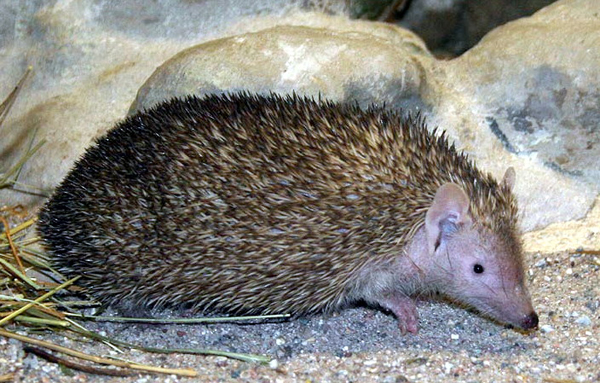
A lesser hedgehog tenrec. Photo by Wilfried Berns www.Tierdoku.com under a Creative Commons Attribution-Share Alike 2.0
Hedgehog
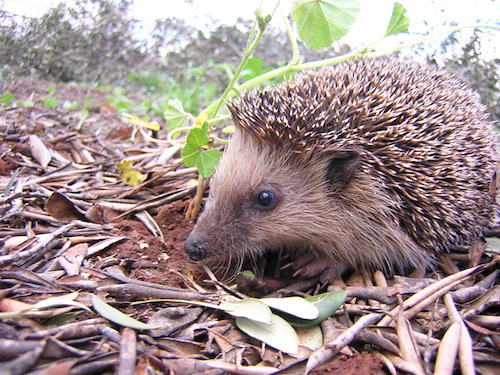
Gibe, CC BY-SA 3.0 http://creativecommons.org/licenses/by-sa/3.0/, via Wikimedia Commons


